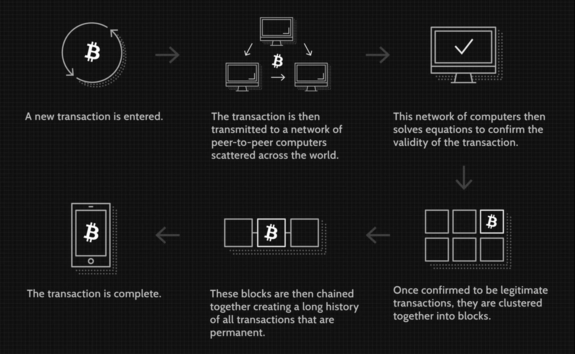Bitcoin

Bitcoin (BTC) is an open source database that makes transactions secure and transparent. These transactions are verified using cryptography and recorded on a ledger known as a “blockchain”. It also refers to the protocol, its’ physical network, and general ecosystem.
Bitcoin’s creator(s) sought a decentralized digital cash system that requires no third party intermediaries. It’s architecture is a simple peer-to-peer Internet overlay network connecting groups of super-nodes known as “Miners”.
History:
BTC is an amalgamation of cipher technologies, but has its’ modern roots in the Cypherpunk movement of the 1990’s and Alan Turing’s Bletchley Park Bombe project during WWII; but the use of cryptography goes back to antiquity. One Cypherpunk was a digital privacy expert named Hal Finney – who was the first BTC recipient and helped diagnose and fix early versions of the code.
Bitcoin code is open-source written in C++ and was worked on by a small collaboration led by Satoshi Nakamoto Nakamoto released the Bitcoin white paper “Bitcoin: A Peer-to-Peer Electronic Cash System” on October 31, 2008 and the software version 0.1.0 was released on January 9, 2009. Self-proclaimed Satoshi and Austrian economics advocate -Dr. Craig Wright is currently Chief Scientist at nChain patented the white paper in 2019.
BTC is created through an economic incentive system known as mining, where miners provide compute so the network achieves consensus and for this effort miners are rewarded with new coins. Its’ economic roots are generally aligned with Austrian economics and Nobel laureate F.A. Hayek’s “Denationalisation of Money: The Argument Refined.”
Reference:
http://bit.ly/2GoktJh and https://en.wikipedia.org/wiki/Bitcoin

